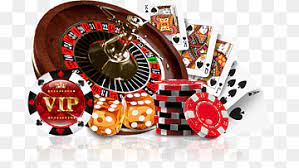Consistently instruments improve the existences of individuals all over the planet and keep on advancing society and craftsmanship all through each general public and local area, come what may estimate or construction. Indeed, even those individuals of the world who live external the domain of innovation appreciate and utilize instruments to recount stories or engage. Somebody who has never played instruments yet is keen on attempting one has all in all a determination to browse
Playing the violin is a brilliant encounter and generally simple to learn on the off chance that you make it stride by step. First and foremost anyway you want to get the mechanics of the violin so you know where to put your fingers and why.

The primary parts of the violin are the front, additionally called the midsection, top, or soundboard, typically made of very much prepared tidy; the back, generally made of all around prepared maple; and the ribs, neck, fingerboard, pegbox, scroll, scaffold, rear end, and f-openings, or soundholes. The front, back, and ribs are consolidated to frame an empty sound box. The sound box contains the sound post, a dainty, dowel-like stick of wood wedged inside under the right half of the scaffold and associating the front and back of the violin; and the bass-bar, a long portion of wood stuck to within the front under the left half of the extension. The sound post and bass-bar are significant for the transmission of sound, and they likewise give extra help to the development. The strings are secured to the rear end, lay on the extension, are suspended over the fingerboard, and race to the pegbox, where they are appended to tuning stakes that can be gone to change the pitch of the string.
A violin player makes various pitches by putting the left-hand fingers on the string and squeezing against the fingerboard. The strings are set in vibration and produce sound when the player draws the bow across them at a right point close to the scaffold.
Among the most embellished qualities of the violin are its singing tone and playing quick, splendid figurations as well as expressive melodies potential. Musician can without much of a stretch make embellishments through the accompanying procedures: pizzicato, culling the strings; tremolo, moving the bow quickly to and fro on a string; sul ponticello, playing with the bow incredibly near the extension to deliver a dainty, polished sound; col legno, having with the wooden impact of the bow rather than with the hair; sounds, putting the fingers of the left hand delicately on specific marks of the string to get a light, flutelike sound; and glissando, consistently skimming the left-hand fingers all over along the string to create a vertical or descending sliding pitch.
Among authors of significant performance and chamber works for the violin are Bach, Wolfgang Amadeus Mozart, and Ludwig van Beethoven in the florid and traditional times; the Austrian Franz Schubert, the Germans Johannes Brahms, Felix Mendelssohn, and Robert Schumann, and the Russian Peter Ilyich Tchaikovsky in the heartfelt period; and the French Claude Debussy, the Austrian Arnold Schoenberg, the Hungarian Béla Bartók, and the Russian-conceived Igor Stravinsky in the twentieth century.

